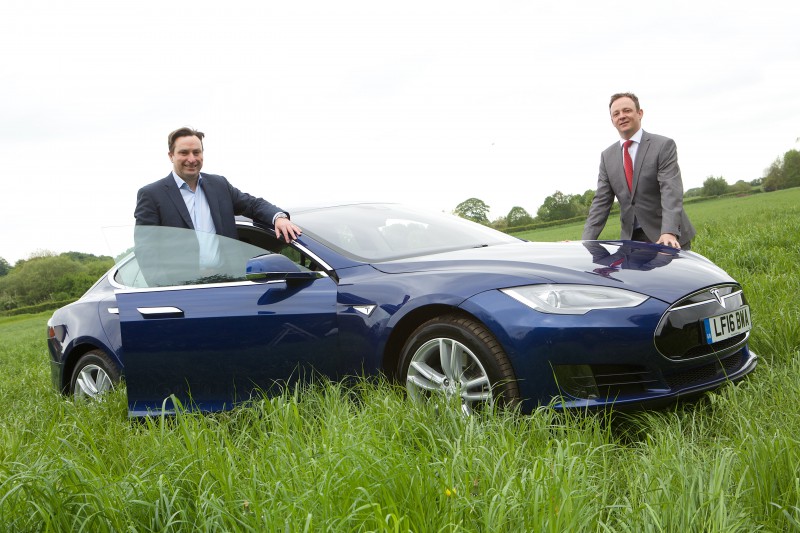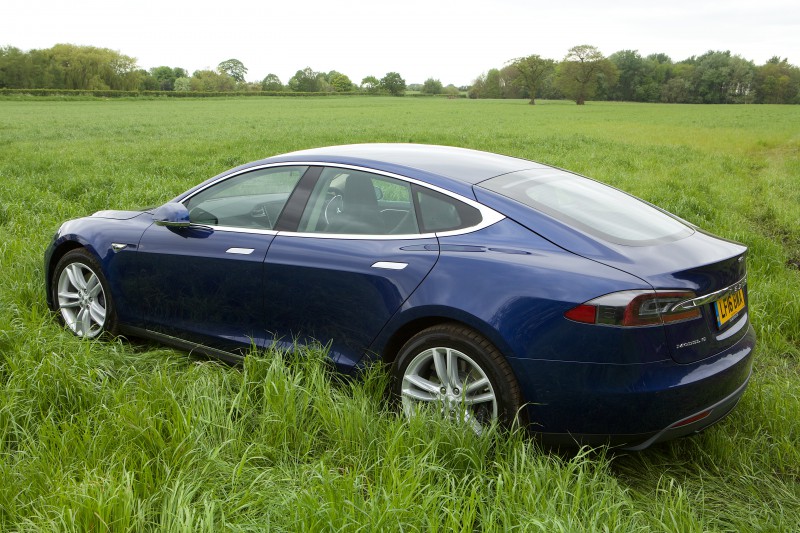Graham Forrester is the Managing Director of the McGoff Group Facilities Services Limited based in Altrincham. Graham has been driving Tesla S on Contract Hire for a few months now and we sat down with him to find out what his experience has been so far…
So Graham, why did you choose Tesla rather than a more conventional car?
For the business: the Tesla S had 100% capital allowance in the first year; zero road tax, £5,000 Government contribution, significantly reduced fuel costs, no London Congestion Charge and very little maintenance and servicing requirements.
Personally, it is an extremely well equipped, high-tech, spacious, eye-catching, low environmental impact, high performance car with only 5% benefit in kind tax and very low (virtually free) fuel costs and emissions.
How many miles can you drive before recharging your Tesla?
I generally charge to 90% capacity (which is recommended by Tesla for maintaining battery life) which gives a 207 mile range. I don’t usually like to let the range drop below 30 miles before recharging.
How are the charging facilities around you? Do you charge it at the office or home?
I have a single phase charging point at home and a three-phase point at my workplace. I am also lucky to have Tesla Superchargers in relatively close proximity to home for longer journeys north, east and south bound. The car plans my longer journeys via the Supercharger network which Tesla have guaranteed to be free for use and currently other charging points such as Ecotricity are free to use. Home charging tends to be the exception rather than the rule.
Are there any notable differences between a normal car and an electric car?
The three most significant differences include: the lack of engine noise, the use of the regenerative engine to decelerate and the instant torque when accelerating.
Pre- Tesla how much money would you have to put in your car? How much would it cost you a week now in comparison?
Fuel costs for my Mercedes C220D were around £60 per week and benefit in kind was around £36 per week. Fuel costs now are virtually zero whilst benefit in kind is £26 for the Tesla S 70.
What are the pros and cons of driving a Tesla?
The pros? It is simply a pleasure to drive. The comfort, entertainment system (Spotify and Internet radio), performance, low noise levels and cabin/luggage space are superb.
The cons? You have to ensure that you allow sufficient time to stop and charge on longer journeys. The Tesla S 70 has the shortest range of all the versions however the longer range comes with a significantly higher price tag. Personally I need to stop every couple of hundred miles to stretch my legs and recharge my own batteries and this allows me to catch up with e-mails and make calls. The only other con I have found so far is the lack of any means to hang up my jacket!
Does it drive differently?
It drives itself. You can’t get much more different than that.
The first time you drive the car the complete lack of noise is a total surprise however you soon get used to it. The Tesla S is very easy to drive and, despite its large footprint, very easy to manoeuvre because of the all-round sensors and reversing camera.
For more information about Electrical vehicles contact CVSL today.


